Most responses to the problem of evil focus on the problem of human suffering. This article argues that the problem of animal pain requires a different response than a problem of evil which focuses on human suffering. There are as many “problems of evil” as there are animals who have endured pains (a vast number, according to contemporary science). However, we must not view the sum total of animal suffering as one experiential evil: no one individual experiences the total sum of animal pain. Furthermore, it does not seem that animal suffering is commensurate with human suffering. Given a “principle of repeatable reasons” it is plausible that theists can answer the problem of animal pain.
The Evidential Problem of Evil: Argument and Counterargument
The Problem of Animal Suffering
The Pains of Animals and Humans
Calculating the Total Amount of Animal Suffering
The True Problem of Animal Suffering
Conclusion: Theodicy, Animal Rights and Environmentalism
The Evidential Problem of Evil and A Response
It is usually conceded that God might have some morally sufficient reason for allowing suffering. However, even if God could have morally sufficient reasons for allowing some human suffering, it has been argued that there would remain “gratuitous evils” which are inconsistent with theism. A gratuitous evil is an instance of intense suffering which is not the occasion for any greater outweighing good, or which does not prevent any greater evil from occurring (Hasker, 2005, p. 433).
A classic statement of this “evidential problem of evil” is due to William Rowe.
1: There exist instances of intense suffering which an omnipotent, omniscient being could have prevented without thereby losing some greater good or permitting some evil equally bad or worse.
2: An omniscient, wholly good being would prevent the occurrence of any intense suffering it could, unless it could not do so without thereby losing some greater good or permitting some evil equally bad or worse. Therefore,
3. There does not exist an omnipotent, omniscient, wholly good being (Hasker, 2005, p.433)
Peter van Inwagen has responded that God could have good reason for allowing gratuitous evils to occur. He argues that it is reasonable to believe that part of the goodness of God’s creation is the existence of human beings, who are self-aware, autonomous rational beings capable of free-choice and moral responsibility. God must allow the possibility of danger, suffering and loss or he will fatally undermine human responsibility. And if humans are to grow in compassion and faith, they must face potentially dangerous challenges. So God must allow humans to suffer.
Now, if God were to intervene to prevent gratuitous suffering, he would have to intervene not once, but continually. Nor can God intervene to prevent every gratuitous evil without significantly undermining human freedom and responsibility. This would leave us with a world in which parents could casually starve their children, because God would miraculously intervene to prevent their deaths. So God must allow some instances of gratuitous suffering. Furthermore, it is difficult to specify how many instances of gratuitous evil God might allow:
…if he prevents only some horrors, how shall he decide which ones to prevent? Where shall he draw the line?…I suggest that wherever he draws the line, it will be an arbitrary line… For any n, if the existence of n horrors is consistent with God’s plan, the existence of n-1 horrors will equally be consistent with God’s plan. To ask what is the minimum number of horrors that is consistent with God’s plan is like asking, What is the minimum number of raindrops that could have fallen on England in the nineteenth century that is consistent with England’s having been a fertile country in the nineteenth century? (Van Inwagen, 2005, p.214-215)
The Problem of Animal Suffering
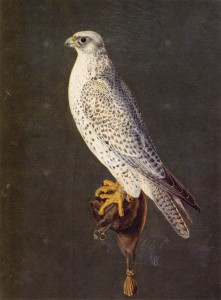 However, the problem of animal suffering raises two difficulties for Van Inwagen’s response to gratuitous evil. First, human beings have free-will and moral responsibility; animals do not. Animals were suffering for countless generations before human beings appeared on Earth. Perhaps humans need animals to survive and thrive; but the greater goods of free-will and responsibility do not depend on pre-human animal suffering. Why did God use the means of Darwinian evolution to produce animal life, which required trillions of deaths over millions of years, when an omnipotent, omniscient God could have miraculously created animals without using the means of evolution? We will return to this question in the conclusion.
However, the problem of animal suffering raises two difficulties for Van Inwagen’s response to gratuitous evil. First, human beings have free-will and moral responsibility; animals do not. Animals were suffering for countless generations before human beings appeared on Earth. Perhaps humans need animals to survive and thrive; but the greater goods of free-will and responsibility do not depend on pre-human animal suffering. Why did God use the means of Darwinian evolution to produce animal life, which required trillions of deaths over millions of years, when an omnipotent, omniscient God could have miraculously created animals without using the means of evolution? We will return to this question in the conclusion.
Second, Mylan Engel Jr. argues that
…while it might be permissible for God to allow some minimal amount of gratuitous evil, it would clearly be wrong for God to allow an excessive amount of gratuitous evil, and so, an excessive amount of gratuitous evil surely is incompatible with God’s existence. The evidential argument from animal suffering can easily be couched as an argument designed to show that an excessive amount of gratuitous animal suffering exists and that therefore God does not[emphasis added]. (Engel, 2008)
So we can state the problem of evil from animal suffering:
1’: There exists a vast amount of intense animal suffering which an omnipotent, omniscient being could have prevented without thereby losing some greater good or permitting some evil equally bad or worse.
2’: An omniscient, wholly good being would prevent the occurrence of a vast amount of animal suffering, unless it could not do so without thereby losing some greater good or permitting some evil equally bad or worse. Therefore,
3’. There does not exist an omnipotent, omniscient, wholly good being.
Note that a gratuitous evil is an instance of intense suffering. The force of the argument from gratuitous evil depends on intense suffering because intense suffering can only be justified by a very weighty outweighing good. However, we can reasonably ask if animals endure anything like intense suffering. Part of the difficulty in assessing animals suffering is that:
Pain is a private experience. As such, it cannot be directly observed, verified, or measured. Many dependent variables in research are not directly observable, dissolved oxygen in water for example, but there exist standardized and validated instruments that can be used for this measurement purpose. A fundamental difficulty in research on pain is that there are no simple, unequivocal ways to measure it aside from verbal communication with human subjects and even that method is subject to error (Rose et al, 2013, p.99)
Another problem is that different researchers work with different definitions of “pain”. Rose distinguishes between “theoretical/explanatory definitions” and “operational definitions” (2013, p.100) . An operational definition explains how pain is measured in a particular experiment. For instance, the presence of shock avoidance learning has often been operationally defined as an indication of pain (Rose et al, 2013, p.100). This does not, however, give us any insight into what an animal actually experiences. A theoretical/explanatory definition tries to give a meaningful definition of pain. For example, the necessary conditions for pain offered by:
… the International Association for the Study of Pain (IASP) are that pain is (i) an unpleasant sensory and emotional experience associated with actual or potential tissue damage, or described in terms of such damage; (ii) pain is always subjective; and (iii) pain is sometimes reported in the absence of tissue damage and the definition of pain should avoid tying pain to an external eliciting stimulus [emphases added]. (Rose et al, 2013, p.100)
 Following the IASP, Rose argues that we need to distinguish between nocioception and pain. Nocioception is the encoding and processing of harmful stimuli in the nervous system, and, therefore, the ability of a body to sense potential harm. Pain is more than a simple sensory experience signalling the existence of damaged tissue: pain is a psychological state. Pain often, but not always, accompanies nociception; pain sometimes occurs without nociception; and the degree of pain is often poorly associated with severity of injury.
Following the IASP, Rose argues that we need to distinguish between nocioception and pain. Nocioception is the encoding and processing of harmful stimuli in the nervous system, and, therefore, the ability of a body to sense potential harm. Pain is more than a simple sensory experience signalling the existence of damaged tissue: pain is a psychological state. Pain often, but not always, accompanies nociception; pain sometimes occurs without nociception; and the degree of pain is often poorly associated with severity of injury.
People can sustain severe injuries and not report pain;sometimes they report more or less pain than the extent of their injuries would suggest. Pain can be greatly reduced or increased by ‘psychological’ manipulations such as a visual illusion, created or reduced by hypnotic suggestion while nociceptor activation is unmodified.
Furthermore, pain has a strong social learning component and depends greatly on prior experience, beliefs about it, and interpersonal interactions rather than the extent of nociceptor activation per se. For example, a child’s pain response depends greatly on behavior of caregivers (Rose et al, 2013, p.100) So, in Rose’s view, animals without a neo-cortex complex enough to sustain complex psychological states experience only nocioception, not pain.
Michael Murray (2008, p.41-72) has recently argued that there are good scientific and philosophical grounds for doubting that most animals experience pain. However, Balcombe (2009) argues that is simpler to believe that animals who behave as if they are undergoing certain phenomenal experiences which we associate with pain actually are having those phenomenal experiences:
In the face of current knowledge, it is a bigger assumption that animals are unconscious, unfeeling things than that they are sentient, emotional and aware. Furthermore, ascribing conscious experience to animals, and the sentience that ensues, need not be seen to violate the law of parsimony, for cognitive explanations can be simpler than cumbersome stimulus–response explanations. (Balcombe, 2009, p.209)
Because phenomenal states are private, and not open to direct observation, it is rather difficult to establish that they do not accompany nocioception. Rather than arguing that animals do not suffer pain and only experience nocioception, it might be more helpful to distinguish between “conscious pains” and “intense, personal suffering”. A more modest argument could then be made that most vertebrates only experience “conscious pains” – simple, unpleasant phenomenal experiences which signal tissue damage. However “intense, personal suffering” requires a higher order of consciousness than simple, first-order, phenomenal states.
 Complex psychological states such as “dread”, “regret” or “sorrow” seem to require a very complex nervous system – at a minimum, first-order brain states must be processed by higher cortical regions to create second-order states about those first-order states. Most animals lack the higher cortical regions capable of such processing the information to produce such beliefs, propositional attitudes and emotions (Rose, 2002, p. 1-10) Roger Scruton also notes that, unlike animals, humans are self-conscious, refer to themselves in the first person, and actively assert and value their own individual desires. One human individual is not replaceable by another.
Complex psychological states such as “dread”, “regret” or “sorrow” seem to require a very complex nervous system – at a minimum, first-order brain states must be processed by higher cortical regions to create second-order states about those first-order states. Most animals lack the higher cortical regions capable of such processing the information to produce such beliefs, propositional attitudes and emotions (Rose, 2002, p. 1-10) Roger Scruton also notes that, unlike animals, humans are self-conscious, refer to themselves in the first person, and actively assert and value their own individual desires. One human individual is not replaceable by another.
When we come to the rational level of mental life, however, a wholly new kind of individuality emerges. Unlike the lower animals, rational beings are conscious of their own individuality and refer to themselves in the first person. Their individuality is not a passive thing, attributed by others; it is something that they assert against the world (Scruton, 1999, p. 42).
Deep personal attachments are impossible in the animal kingdom because animals lack our sense of individuality:
The relation of a mare to her foal is not an example of the I-Thou (Ich-Du) relation so poignantly explored by Martin Buber. The mare does not cherish her foal’s life, personality or identity; does not stand vigil over its moral and psychological development; does not feel its pains and joys as her own….All such attitudes require a consciousness of self and other and of the relation between them, which is inherently absent from the mental repertoire of the non-human animals (Scruton, 1999, p.36).
The absence of rational individuality and deep personal attachments in the mental lives of animals means that they cannot suffer loss as humans do. There is no dread of death, no regret or repentance, and no grief in the animal world. Furthermore, while many kinds of animals might suffer unpleasant phenomenal states which signal tissue damage (ie. “conscious pains”), we have noted it is not at all clear that they suffer anything like the human psychological state of “intense, personal suffering”. So it is unlikely that animals suffer the intense suffering required for gratuitous evils.
Do Animals Endure Horrendous Evils?
Marilyn McCord Adams has pointed out that a particular category of gratuitous evil creates an acute problem for Christian theism: “horrendous evils” or “horrors”. These are instances of suffering that seem to render a human life worthless; a person enduring such suffering could rationally claim “it would have been better that I had not been born”:
In an effort to isolate the category of the very worst evils, I define horrors evils the participation in (the doing or suffering) of which constitutes prima facie reason to doubt whether the participant’s life could (given their inclusion in it) be a great good to him/her on the whole. My standard examples include the rape of a woman and the axing off of her arms, psycho-physical torture whose ultimate goal is the disintegration of personality, cannibalizing one’s own offspring, child abuse of the sort described by Ivan Karamazov, parental incest, participation in the Nazi death camps, the explosion of nuclear bombs over populated areas, being the accidental and/or unwitting agent in the disfigurement or death of those one loves. Participation in horrors furnishes reason to doubt whether the participant’s life can be worth living, because it engulfs the positive value of his/her life and penetrates into his/her meaning-making structures seemingly to defeat and degrade his/her value as a person. (Adams, 2002, 469).
Why do such horrors pose an acute problem for Christian theism? Christianity teaches that God does not merely value the human race; Christianity teaches that God loves the individual person passionately and wishes that each person’s life be good. This being the case, the Christian cannot argue that a generic good such as free-will, or values such as faith, compassion and courage, justify the existence of horrendous evils. These generic goods benefit and dignify humanity so much that they outweigh the cost of horrendous evils for the human race taken as a whole. Horrendous evils, however, seem to make an individual’s life taken as a whole worthless.
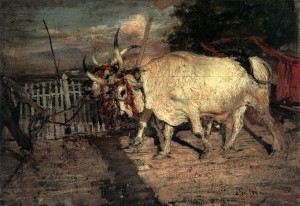 But the Christian can also conceive of goods that could overwhelm the most horrendous suffering. Christians respond to the existence of horrendous evils by pointing out there are eternal goods which can overwhelm and redeem the most horrendous events. While we cannot imagine the greatness of heaven or the new creation, we know that they will surpass our wildest expectations. Resurrection, divine healing, intimacy with Christ and communion with God through his Spirit would make eternal life a great good for the person experiencing it, no matter what temporary horrors that person has endured. If there is eternal life, then no human need live a life which has been overwhelmed by horror.
But the Christian can also conceive of goods that could overwhelm the most horrendous suffering. Christians respond to the existence of horrendous evils by pointing out there are eternal goods which can overwhelm and redeem the most horrendous events. While we cannot imagine the greatness of heaven or the new creation, we know that they will surpass our wildest expectations. Resurrection, divine healing, intimacy with Christ and communion with God through his Spirit would make eternal life a great good for the person experiencing it, no matter what temporary horrors that person has endured. If there is eternal life, then no human need live a life which has been overwhelmed by horror.
Now, if an animal lacks rationality, lacks consciousness of their own individuality, does not create their own biographical lives through conscious moral choices and does not have deep, lasting personal attachments, then it is very difficult to see what benefit an afterlife would be to an individual animal. But it also follows that the same animal cannot experience an horrendous evil. Horrendous evils are moral and existential horrors: they shock, challenge and undermine people’s sense of worth, their beliefs about human significance, their expectation of “how things should be”. But animals have no moral expectations or existential needs. An animal which lacks rational individuality cannot make a judgement about the overall value of its life.
Furthermore, there is little in the Christian tradition to suggest that God passionately loves individual animals so much that he desires an everlasting relationship with each one. Christians have no reason to think that God wants each individual animal to experience a life with more bliss than struggle. So the theist can propose generic goods which justify animal suffering.
Will Some Animals Go To Heaven?
Suppose that some animals do experience intense suffering or horrendous evils. It is worth noting that theologically orthodox Christians from Martin Luther and John Calvin, to John Wesley and CS Lewis have argued that some form of afterlife might be available for some animals, particularly in the new heavens and new earth (Murray, 2011, 123-125). Romans 8 suggests that creation yearns for resurrection:
18 I consider that our present sufferings are not worth comparing with the glory that will be revealed in us. 19 For the creation waits in eager expectation for the children of God to be revealed. 20 For the creation was subjected to frustration, not by its own choice, but by the will of the one who subjected it, in hope 21 that the creation itself will be liberated from its bondage to decay and brought into the freedom and glory of the children of God. 22 We know that the whole creation has been groaning as in the pains of childbirth right up to the present time.
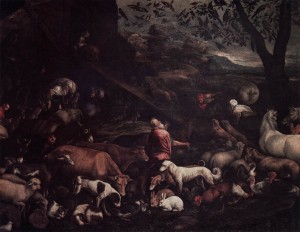 And Colossians 1 asserts that God will reconcile all creation to himself through Christ. The thought is that all creation will participate in a resurrection when Christ returns. So, if there are higher animals which can experience something which approximates individual rationality, then perhaps there will be a place in the new creation for such animals.
And Colossians 1 asserts that God will reconcile all creation to himself through Christ. The thought is that all creation will participate in a resurrection when Christ returns. So, if there are higher animals which can experience something which approximates individual rationality, then perhaps there will be a place in the new creation for such animals.
Furthermore, in Christian theology, the present heaven’s and earth will be physically transformed into the new heavens and new earth. So the present physical world will form part of the foundation of new heaven and new earth. The history of our universe, and our planet, forms part of the character of the new creation. And, presumably, animals will be part of the new creation. So no animal has lived and died in vain. Animal life will continue forever, its future shaped (in part) by its history.
How Much Have Animals Suffered?
However, even if animals only suffer ‘simple pain’ could the sum of all the pains suffered by animals since the beginning of the creation count as a gratuitous evil? Perhaps not. It is not at all clear that pains can be meaningfully aggregated into one total amount of suffering.
Seachris and Zagzebski point out that it is difficult to assess arguments from the amount of suffering without some way of determining the total amount of suffering in the world. They argue that there are significant difficulties with aggregating the suffering of many individuals. We might attempt to calculate the total amount of suffering using classical utilitarianism’s hedonic calculus: the severity, duration and instances of pain are added to give a total. The suffering of individuals would then be added to give one total. They believe that C. S Lewis captured an important point when he argued:
When we have reached the maximum that a single person can suffer, we have, no doubt, reached something very horrible, but we have reached all the suffering there ever can be in the universe. The addition of a million fellow-sufferers adds no more pain. (Quoted in Seachris and Zagzebski, 2007,p.85)
Seachris and Zagzebski quote Wittgenstein: “The whole earth cannot be in greater distress than one soul”. For no one can experience the pain of more than one conscious being; the ‘total amount of pain’ is “an experiential evil that no-one actually experiences” (2004). They defend Lewis’s point this way. Assume, for the purpose of argument, that pain can be measured in units and that one unit of pain is equivalent to a pin prick. Compare two possible worlds.
World A: one individual undergoes one million units of pain;
World B: Two million individuals each undergo one unit of pain.
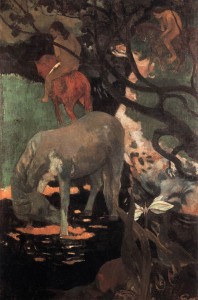 It seems fairly clear that world B is preferable to world A, even though world B contains more units of pain than world A: one unit of pain would mean little in the context of an individual’s life. However, in the experience of one individual, a million units might feel unbearable. Furthermore, it does not seem possible that we can have a world in which one individual endures several trillion of units of pain. Neurological systems and finite lifespans put a limit on the amount of pain that any creature can experience. Pain can only be summed in the experience of one conscious being. It is individuals who undergo suffering; the “vast amount of intense suffering” is an experiential evil which no-one actually experiences.
It seems fairly clear that world B is preferable to world A, even though world B contains more units of pain than world A: one unit of pain would mean little in the context of an individual’s life. However, in the experience of one individual, a million units might feel unbearable. Furthermore, it does not seem possible that we can have a world in which one individual endures several trillion of units of pain. Neurological systems and finite lifespans put a limit on the amount of pain that any creature can experience. Pain can only be summed in the experience of one conscious being. It is individuals who undergo suffering; the “vast amount of intense suffering” is an experiential evil which no-one actually experiences.
The Problem of Animal Suffering Restated
Seachris and Zagzebski agree with Lewis in one sense – that we should not be fooled into thinking of the “total sum of suffering” as an experiential evil; no individual experiences the total sum of suffering. However, they also point out that Lewis overlooks that there are as many problems of evil as there are individuals experiencing evil. So the more individuals who suffer, the worse the problem of evil is for theism:
If the total pain in one person’s consciousness is a bad thing, then the total pain in the consciousness of each of a thousand or a billion individuals is each a bad thing, and God needs a reason to permit each of those bad things, even if the consciousness of each individual is taken individually and the aggregate cannot be summed. Another way to put this point is that there are as many problems of pain as there are sentient beings (Zagzebski and Seachris, 2007, p.86).
However, Zagzebski and Seachris argue that the theist might have no more difficulty justifying a world with one instance of a type of pain than a world with many instances of that type of pain. This is due to what they call the Principle of Repeatable Reasons (PRR).
(PRR): if person A has a sufficient justifying reason to permit p in situation s, then A has a sufficient justifying reason to permit states of affairs relevantly similar to p in situations relevantly similar to s. (Zagzebski and Seachris, 2007, p.87)
Suppose one unit of pain is equal to a prick from a needle. If that needle prick comes from a jab which immunizes an individual from a deadly disease then the pain is surely justified; and, if each needle prick immunizes each person who feels it, it does not matter if one person feels a needle prick, or ten thousand or ten million. Each episode of pain could be justified by giving the same reason. So a vast number of individuals feeling pain could be compatible with theism, if the theist can offer reasons for pain which can cover a vast number of individuals.
We will restate the problem of animal suffering one final time. Given the arguments in the previous two sections we must replace “ a vast amount of intense suffering” with “a vast number of individual animals undergoing simple pains”.
1’’: A vast number of individual animals undergo simple pains which an omnipotent, omniscient being could have prevented without thereby losing some greater good or permitting some evil equally bad or worse.
2’’: An omniscient, wholly good being would prevent a vast number of individual animals undergoing simple pains, unless it could not do so without thereby losing some greater good or permitting some evil equally bad or worse. Therefore,
3’’. There does not exist an omnipotent, omniscient, wholly good being
To meet the challenge of premise 1” the theist must provide justifying, repeatable reasons which explain the simple pains suffered by many individual animals. So are there any greater goods which could justify these pains?
Conclusion: Could God Have Reasons for Allowing Animals to Suffer Pain?
Following Michael J. Murray (2008), we can offer the following justification for the simple pains experienced by animals. It is good that God created an ordered, beautiful universe governed by laws. It is also good that God express his creativity by creating a variety of animals. Animals are embodied creatures living in a universe governed by law-like regularities; pain is a necessary means of enabling animals to preserve life and limb so that they may survive to reproduce.
 However, why would God use the means of Darwinian evolution (or a similarly lengthy process, like progressive creation) to produce animal life when an omnipotent, omniscient God could have created animals instantaneously? Defending theistic evolution, Murray suggests that it might be good for God to create a universe which could produce new forms of life without the constant need for divine intervention. Evolution connects all life in one ancestral tree. It would also be good for God to create an incredible diversity of marvellously complex animals; Darwinian evolution depends on novelty and variety to create lineages of animals which can adapt to ever-changing environments.
However, why would God use the means of Darwinian evolution (or a similarly lengthy process, like progressive creation) to produce animal life when an omnipotent, omniscient God could have created animals instantaneously? Defending theistic evolution, Murray suggests that it might be good for God to create a universe which could produce new forms of life without the constant need for divine intervention. Evolution connects all life in one ancestral tree. It would also be good for God to create an incredible diversity of marvellously complex animals; Darwinian evolution depends on novelty and variety to create lineages of animals which can adapt to ever-changing environments.
We have argued that animals do experience simple, conscious pains, but that they do not experience intense personal suffering or horrendous evils. There are benefits to this assessment. Generally, humans marvel at the living world. We do not merely value it because it is necessary for our existence. There seem to be objective aesthetic values in the intricate structure of living organisms, in the dramatic competition between predator and prey, in the dynamism of life and in the remarkable complexity of ecosystems.
But, if animals generally experience intense suffering and horrendous evils, then our valuation of the living world is mistaken. The world would be more like crude, grind-house horror show than a stunning work of art. If individual animals undergo intense suffering or horrendous evils it would be better that our planet was as lifeless as the moon. Furthermore, if individual animals undergo intense, personal suffering or horrendous evils we might have an obligation to intervene to prevent these. This would demand our aggressive, radical interference in the natural world. If animal suffering is so terrible, wouldn’t we have a duty to limit the amount of predation? To engineer better animals? To destroy those terrible environments which have been red in tooth and claw for countless eons? If we overestimate animal suffering we will at worst be hostile to nature, at best morally indifferent.
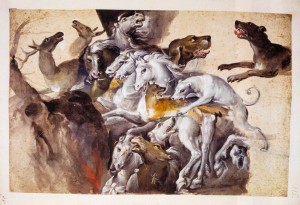 It seems better to respect the integrity, drama, stability, beauty and creativity of the natural world as an intrinsic good. So it seems best to avoid two extremes. The first is the view that animals are little more than automata, unaware of pleasure or pain. The second is that the natural world is at best tragic and at worst hideous or terrifying. On our understanding, many animals experience conscious pain and conscious joy. It is wrong to needlessly cause pain, and this is one reason it is wrong to be cruel to animals. However, in our judgement the individual animal is not as important as the complex natural system of which it is a part. This suggests a “life-centred” or “holistic” environmental ethic (Taliaferro, 1998, 226-227). We should act to preserve biotic communities and ecological systems rather than individual animals.
It seems better to respect the integrity, drama, stability, beauty and creativity of the natural world as an intrinsic good. So it seems best to avoid two extremes. The first is the view that animals are little more than automata, unaware of pleasure or pain. The second is that the natural world is at best tragic and at worst hideous or terrifying. On our understanding, many animals experience conscious pain and conscious joy. It is wrong to needlessly cause pain, and this is one reason it is wrong to be cruel to animals. However, in our judgement the individual animal is not as important as the complex natural system of which it is a part. This suggests a “life-centred” or “holistic” environmental ethic (Taliaferro, 1998, 226-227). We should act to preserve biotic communities and ecological systems rather than individual animals.
It has been argued in that we have no reason to think that animal suffering is commensurate with human suffering. Humans are persons and in God’s image – therefore, the individual human is worthy of respect not owed to an individual animal, and the suffering of humans weighs more heavily in the scales when we consider the problem of evil. Animals do not experience intense suffering or horrendous evils, so the outweighing goods for the simple pains experienced by animals need not be too weighty. It seems that God could have good reasons for animal pain and for using Darwinian evolution to create new life. Given the principle of repeatable reasons it seems plausible that theists can answer the problem of animal pains. If an animal lacks the moral significance of a human person, then an utilitarian justification for animal suffering is both possible and plausible.
Bibliography
Adams, M (2002) “Horrors in Theological Context” Scottish Journal of Theology 55: 468-479
Allen, C. (2004) “Animal Pain” Noûs 38 (4):617-43
Balcombe, J. (2009) “Animal pleasure and its moral significance” Applied Animal Behaviour Science 118 208–216
Engel Jr, M. (2008) https://ndpr.nd.edu/news/23930-nature-red-in-tooth-and-claw-theism-and-the-problem-of-animal-suffering/ (retrieved, 18th October, 2014)
Murray, M. and Ross, G. (2006) “Neo-Cartesian Theodicies of Animal Suffering,” Faith and Philosophy Volume 23, no. 2, pp.169-90.
Murray, M. (2008) Nature Red in Tooth and Claw (Oxford: Oxford University Press)
Rose, J. D. (2002) “The Neurobehavioral Nature of Fishes and the Question of Awareness and Pain” Reviews in Fisheries Science, 10(1): 1–38
Rose, J.D. et al. (2013) “Can Fish Feel Pain?” Fish and Fisheries. Vol. 15 (1) : 97-133
Scruton, R. (2000) Animal Rights and Wrongs London: Continuum
Seachris, and Zagzebski, L. (2007) “Weiging Evils: The CS Lewis Approach” International Journal for Philosophy of Religion, 62, (2): 81-88
Van Inwagen, P. (2001) “The Argument from Particular Horrendous Evils‘ Proceedings of the American Catholic Philosophical Association 74:65-80
Van Inwagen, P. (2005) “The Problem of Evil” in The Oxford Handbook of Philosophy of Religion edited by Wainwright, W. (Oxford: Oxford University Press)
